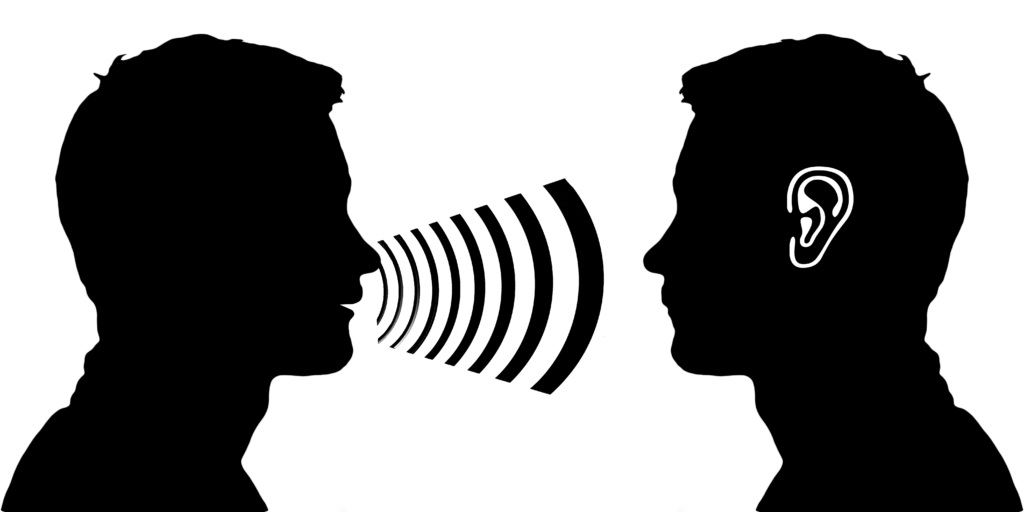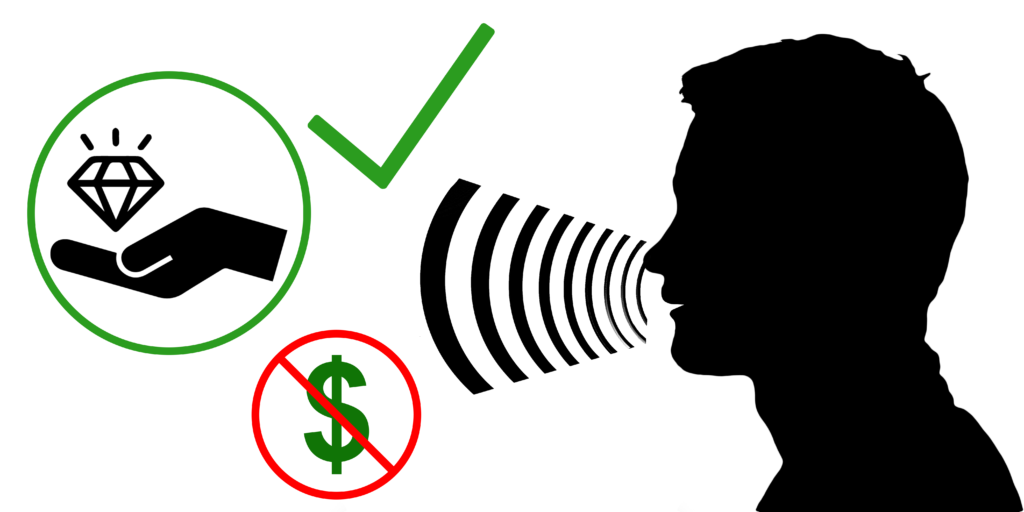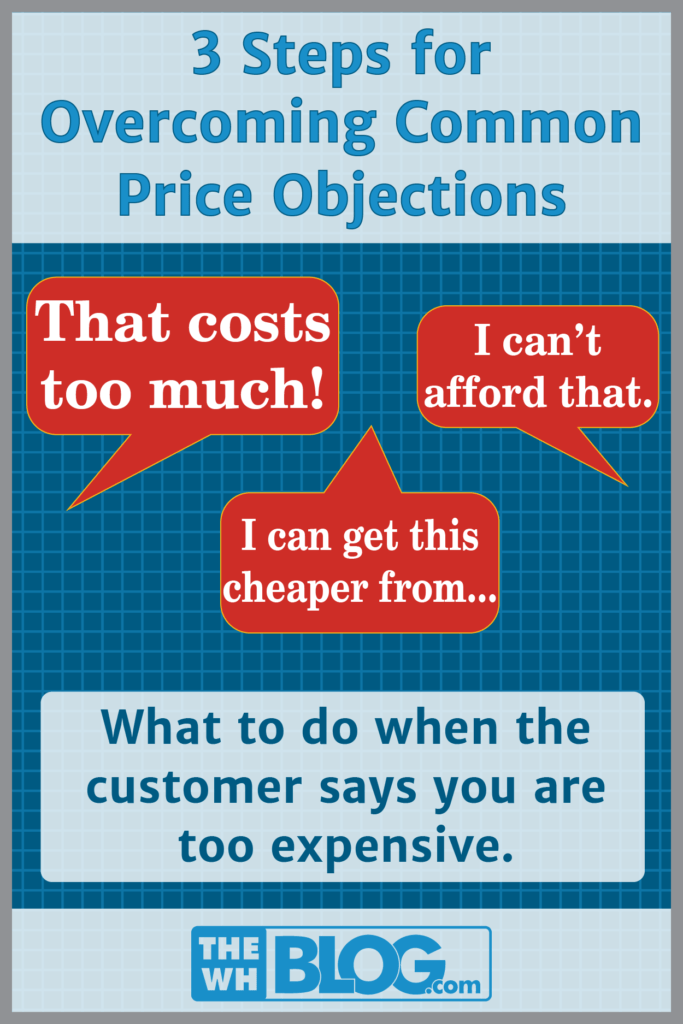That costs too much!
We can’t afford that.
I can get it cheaper from _______.
If you’ve been in business for any length of time, you have likely heard one if not all of these objections to your pricing.
Whether it’s true and the customer honestly cannot afford the cost, or if they’re trying to push you for a discount, you need to discern, respond to and overcome their objection.
Here are 3 helpful steps to overcoming a customer’s objection to price.
Step 1. Discern Their Objection
Listen.

Allow the customer to give their full explanation. Don’t cut them off when they bring up price. There may be more to the story than just $.
Listening has multiple benefits:
- It shows the customer you value their input.
- Gives you more information that could be helpful for addressing their objection.
- Allows you time to collect your thoughts and formulate a response.
Ask Questions.

Make sure you understand the customer’s objection clearly.
If they give a short, concise reason like, “That’s too expensive”, ask them why they think that.
- The product is ‘too expensive’ compared to what? Another product? A competitor?
- Is it just the price, or do they feel the value/benefit of the product doesn’t match the price?
Asking questions allows you to qualify the objection and get to the heart of the problem.
Step 2. Respond
Talk about Value.

Now that you know what is at the heart of the customer’s objection, address that concern.
Before going into negotiations and addressing the price, it’s important to discuss and establish the product’s value. If the customer doesn’t see the value of the item or service you’re offering, then of course they’ll think it’s too expensive. Build confidence that your product or service is worth the higher price tag.
Step 3. Overcome The Objection
Here are some ways to respond to common objections:

The first thing to establish with this objection is whether the customer is comparing ‘apples to apples’.
In other words, are they comparing the exact same product or service, or is a competitor offering a different/cheaper solution?
– If the product/service is different, now’s the time to build value in your offering. Explain or show why your product/service is superior to others. Help the customer understand that the higher quality product/service is worth the higher price.
– If the product/service is the same, discuss the value you offer as a business. Do you offer better customer service? Longer guarantee? Tech support? Help the customer see the added benefits that come with buying from you.
Example: The customer says an online shop has the same product at half the price. You could say, “That’s probably true, but the purchase of this product isn’t the end our service to you. We offer a guarantee that if something goes wrong with the item, you just bring it back and we’ll fix it, no charge. No need to worry about shipping time and costs.”

If this objection is brought up, the customer either doesn’t understand or doesn’t appreciate the value of your product. You may need to spend some more time establishing the item’s value.
This can be done by comparing the 2 similar, but different, products.
– Show by comparison the benefits of the more expensive item and the failings of the cheaper.
Example: You are pricing a full color image on a t-shirt for $10.00. They say it’s too expensive and the shop down the street will do the same thing for $5.00. So you could respond with, “What type of process are they using to print on the shirt? There are some really cheap t-shirt decorating techniques out there, so what is their print quality like? What is the durability of their print? I can guarantee you that if care instructions are followed, this print won’t fade, crack or peel for ‘X’ wash cycles. With a cheaper print, you’ll likely see fading after the first wash.”
Establishing the value of one product over another can also be done by pointing out the long-term benefits. Help the customer look past the immediate price tag and see the ROI (return on investment).
– How will this product affect their reputation vs. the cheaper one?
– How much longer will the expensive product last compared to the cheap one?
– Will they get return business because of this product/service?

It may truthfully be that the customer cannot afford the price. But that doesn’t mean you should give up. There could be some workarounds.
So first, establish what the customer’s budget actually is, then you can try some of these creative solutions:
– Spread out the price. If the total lump sum is too much for the customer to afford, could you offer a payment plan? If you’re selling a service, could they pay ½ up front to get the job started and the remainder when the job is complete?
– Offer à-la-carte (individual item) pricing. If the whole product/service is too expensive, have them identify which parts are most important, and give them pricing for those.
Example: If you’re selling a customized sports jersey, could they do without a name or number on the front? Or if it’s a decorated t-shirt, could the number of colors be reduced, thereby reducing the price?
– If available, give them options for more economical solutions. Is there a similar product that isn’t as good, but they could afford? If price truly is the issue, having a cheaper option as a fall back on will still allow you to capture their business.
Though this list is laid out in a step-by-step format, you will likely be doing all of these things simultaneously. Or you might jump around a little bit.
The important things to remember are:
- Understand why your customer is bringing up price as an objection
- Addressing the objection
- Overcoming that objection without dropping your price

